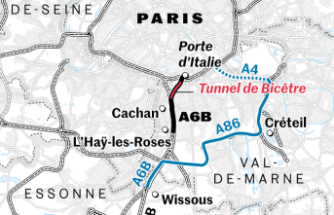The cold can lead to significantly shorter ranges for electric cars, especially in city traffic. On the freeway, on the other hand, the influence of the weather on the range is minimal, according to a new study.
As the speed of travel increases, the influence of the outside temperature on the range of electric cars decreases significantly, as an analysis of movement data by the telematics experts at Geotab, a provider of networked transport solutions, shows. Accordingly, the seasonal influence on the range at motorway speeds is only marginal.
The analysis was based on anonymized data from three million trips with electric vehicles and 550,000 hours of driving time. Based on this data, the ranges of the vehicle types sedan and van with the same battery type with 65 kilowatt hours (kWh) of energy content were compared in a simulation depending on the outside temperature (0, 20 and 30 degrees Celsius) and speed. In all driving and temperature situations, the sedan was able to drive significantly further due to the lower air resistance.
Both vehicles achieved their maximum ranges at an outside temperature of 20 degrees and at a driving speed of around 30 kilometers per hour. At this speed, the temperature factor also causes the largest range differences. At 20 degrees, the sedan drove about 630 kilometers, in the heat (30 degrees) it was around 475 and in the cold around 380 kilometers. However, if the speed increases to 130 kilometers per hour, the temperature-dependent range differences become significantly smaller. At a comfortable temperature and a speed of 130, it was just over 300 kilometers and in heat and cold just under 300 kilometers.
For fleet operators, this means: In order to get the greatest range when driving on the motorway, high speeds should be avoided, especially with larger vehicles. On slower routes, however, seasonal variations will have a greater impact on range.












